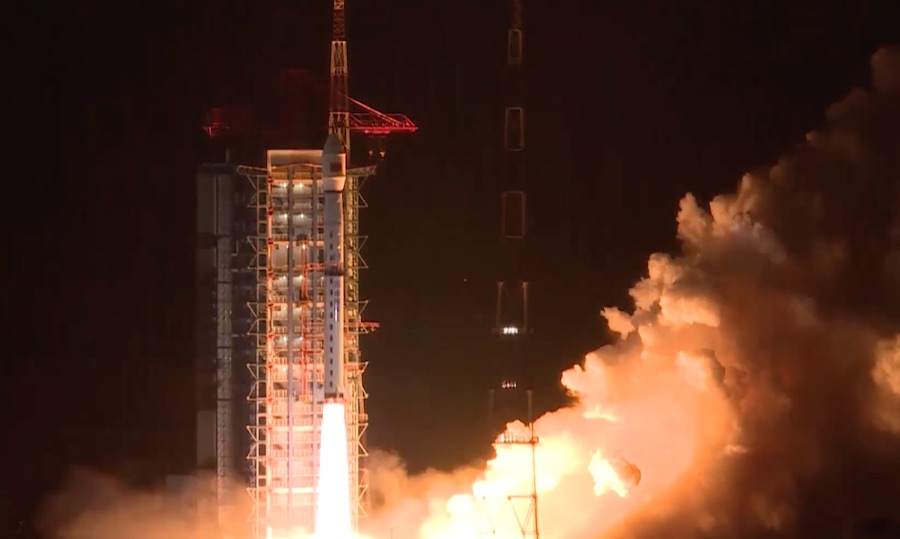
A Chinese Long March 4C rocket delivered into orbit Friday the Gaofen 10 Earth-imaging satellite, a likely replacement for a spacecraft lost in an August 2016 launch failure.
The Long March 4C booster lifted off with the Gaofen 10 satellite at 1851 GMT (2:51 p.m. EDT) Friday from the Taiyuan space center in northern China’s Shanxi province, state media reported.
The launch occurred at 2:51 a.m. Beijing time on Saturday, marking China’s 21st orbital launch attempt in 2019, and the 19th successful Chinese space launch so far the year.
Chinese state media said the satellite launched by the three-stage Long March 4C rocket carries a high-resolution Earth-imaging instrument capable of resolving features on the ground smaller than a meter, or about 3.3 feet. The imaging data will be used for urban and infrastructure planning, land surveys, crop yield assessments, disaster prevention, and other applications, state media reported.
The Gaofen series of satellites are part of the China High-Resolution Earth Observation System, or CHEOS. Chinese officials say the CHEOS satellite fleet is a civilian-operated program comprising optical and radar imaging spacecraft, and authorities have published high-resolution imagery taken by previous Gaofen satellites.
U.S. military tracking data indicated the Long March 4C rocket placed the Gaofen 10 satellite into a nearly circular polar orbit around 380 miles (613 kilometers) above Earth, with an inclination of 97.8 degrees.
Chinese state media did not identify the Gaofen 10 satellite as a replacement for a previous spacecraft named Gaofen 10, which was destroyed in a Long March 4C launch failure in August 2016.
But the failed Aug. 31, 2016, launch lifted off from Taiyuan at roughly the same time of day as Friday’s mission, suggesting it carried a payload destined for the same type of orbit. Chinese officials did not acknowledge the August 2016 launch failure for several weeks.
Email the author.
Follow Stephen Clark on Twitter: @StephenClark1.



